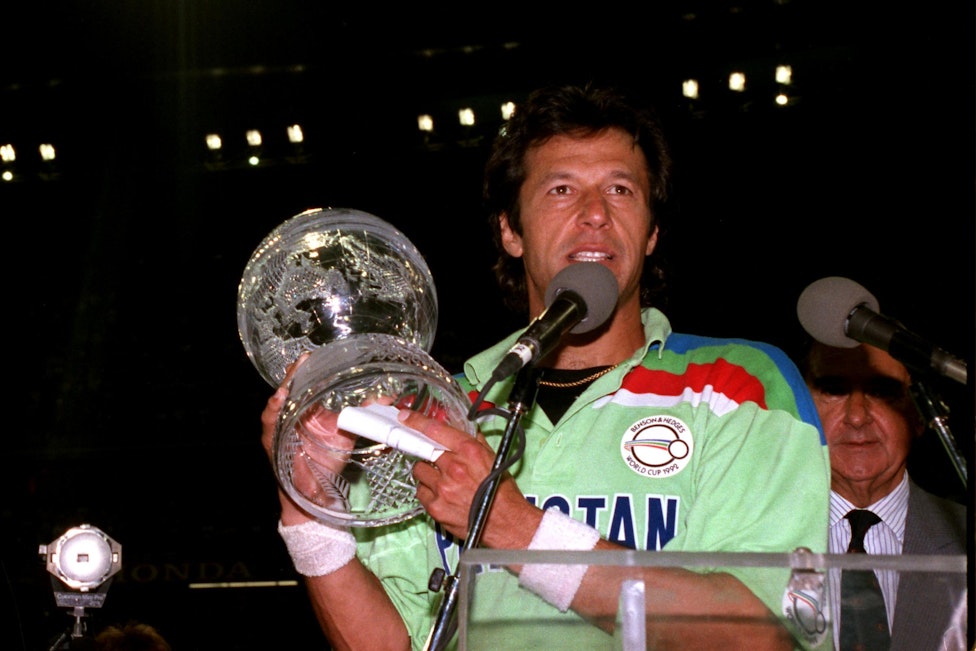 ON THIS DAY
ON THIS DAYPlayers have emerged after him, scored more runs and even taken more wickets, but Imran Khan still remains the best player to have come out of Pakistan. Despite him being Pakistan’s only skipper to deliver an ODI World Cup to the nation, it doesn’t define Imran’s impact on Pakistan cricket. It was merely the icing on the cake.
Imran Khan’s talent is a testament to his lineage. Born on October 5, 1952, one of Imran’s father’s ancestors was said to be a general in Sher Shah Suri’s army, while his mother’s ancestors are said to be descendants of Pir Roshan, a Sufi warrior who invented the Pashto alphabet.
As if this vast pedigree wasn’t enough, Imran was also born into an affluent family who would educate the kid in Lahore’s Aitchison College and then send him to England’s Royal Grammar School Worcester. Imran Khan’s greatness was never in doubt; the only thing destiny left in his hands was passion, and Imran found that in cricket very early on.
Having spent most of his teen years in the UK, Imran would master swinging the ball owing to his exposure to the Duke ball. He would become a pro during his days at Kebble College, where Imran studied Politics, Economics, and Philosophy from 1972 to 1975.
Imran would play for Lahore A, Lahore B, Lahore Greens, and Lahore between 1969 and 1971. He played county cricket for Worcestershire from 1971 to 1976 and in the University of Oxford’s Blues cricket team during the 1973–1975 seasons. He would make his international Test debut in June 1971 and ODI debut in 1974, both before he finished his studies.
Imran would get into the Pakistan team in a full-fledged manner in 1976, and by 1978, he had become the third-fastest bowler in world cricket, sitting ahead of Dennis Lillee and Andy Roberts. He had initially started bowling medium pace with a chest-on action before he revamped it into fast bowling, which entailed an ostentatious run-up, immense strength, and an iconic leap. The entire Imran Khan run-up that ended with a rocket-speed swinging delivery was a sight to behold for many.
Imran Khan reinvented swing bowling during the late 1970s. He could do things with the cricket ball others couldn’t even fathom. He could bowl a fast, swinging delivery where the ball went against the seam’s inclination. Old ball or new, it didn’t matter to Imran, who used to shine the old ball to get counter-swing as well, leaving opponents flummoxed.
It was in the early 80s when Imran would reach his peak. At 30, Imran had had an unbelievable run of 62 wickets in nine Tests with an average of 13.29. It would be fair to say that he was the most popular amongst the all-rounder quartets of Kapil Dev, Ian Botham, Richard Hadlee, and him. The Pakistani averaged 37 while batting and 22 with the ball.
It was a matter of time before Imran’s cricketing genius and popularity would make him the captain, taking the moniker from Javed Miandad. Thus started an era of glory in 1983, which is still unmatched in Pakistan cricket.
The captain’s coat suited Imran seamlessly as he became a better player wearing it. Pakistan won their first Test match in England against the host in only Imran’s second match as a captain and Imran would follow it with his best career bowling figure of 8/58 against Sri Lanka.
He would lead Pakistan to a famous 3-0 series win over arch-rivals India, where the captain took a whopping 40 wickets in six Test matches with an average of 13.95. Imran’s first year as captain saw him take 88 wickets in 13 Tests. However, just when things were looking promising for Pakistan, Imran suffered a stress fracture in his shin that saw him sit out for almost two years.
By the time Imran made a comeback, it was already 1985. He would take some time to get back his groove and lead Pakistan to a series win over India in their neighbour’s backyard and follow it with a series victory against England on their home soil. Imran Khan is also credited with managing three draws against the West Indies of the ‘80s, who were otherwise invincible.
With the 1987 World being hosted by India and Pakistan, Imran wanted it to be his swansong and retire with the coveted trophy. However, it ended in heartbreak with Pakistan losing to Australia in the semis in Lahore, following which Imran announced his retirement.
But, as fate would have it, Pakistan’s then-President Zia-ul-Haq would take one year to convince Imran to return to international cricket and the captain did it in a magnificent fashion. Upon his return, Pakistan would go on to beat West Indies in a match on their home soil, with Imran taking 23 scalps in three Test matches.
With Pakistan having a shaky batting order in the 1992 World Cup, Imran had to bat up the order alongside veteran Miandad. A 39-year-old Imran was half the bowler now but Pakistan banked on his unparalleled captaincy to win the title by beating New Zealand in the final. Imran would take the last wicket in the final, a proper send-off for him.
Under his captaincy, Pakistan won 14 Tests and 77 ODIs and although Pakistan had better captains later on, who could boast of a better record, it was Imran Khan who brought Pakistan cricket onto the world map and developed a generation of fast bowlers who served Pakistan for years.